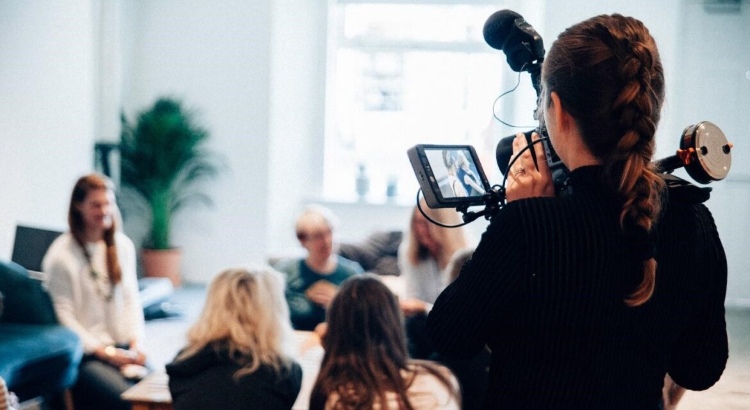What Is a Video Release Form?
A video release form is a signed document that gives permission to use someone’s image, voice, or work in a video project. This form provides informed consent and protects both parties. It is vital for:
- Entertainment industry projects
- Student films and documentaries
- Media interviews and journalism
- Market research recordings
You must get this form signed before filming starts. Without it, you risk legal problems or having your project pulled after release. In fact, lack of proper consent is a leading cause of content takedown requests (Statista, 2022).
Why Is a Video Release Form Important?
The video release form protects filmmakers, content creators, and organizations. Here’s why it matters:
- It proves you have permission to use someone’s likeness or words.
- If someone changes their mind later, the signed form keeps you safe from lawsuits.
- It avoids having to remove or delete parts of your work after you finish filming.
On-camera guests and interviewees sometimes regret what they said or did. This can be more common in projects about sensitive topics like politics or national events. A video release form helps everyone make careful, informed decisions about taking part.
When Do You Need a Video Release or Consent Form?
Use a video release form whenever you film people who are not paid actors under contract. This includes non-actors, bystanders, experts, or people featured in:
- Interviews
- Documentary footage
- Testimonials
- Event recordings
Written consent is needed for anyone shown or heard in your production. This includes both on-camera talent and people working behind the scenes.
Types of Video Release and Consent Forms
Each project and participant may need a different form. Common types include:
- Interview consent forms: Gives you the right to use the interview and all spoken content.
- General video release forms: Lets you use someone’s image, voice, or actions in your project, for agreed purposes.
Always tailor forms to each person and situation. Templates can help, but editing them for your needs is key.
What Should Your Video Consent and Release Form Include?
Every form should cover basic elements to protect you and the signer. Essential parts include:
- Names of everyone involved
- Project description
- Specific rights being granted (image, voice, quotes, etc.)
- How and where the footage will be used
- Time period for consent (indefinite or project-based)
- Whether use is commercial, non-commercial, or both
- Payment or compensation details (if any)
- Date and signature lines for all parties
Media Asset Consent
List what types of media you will use. This may include:
- Still images
- Recorded audio
- Video footage
- Direct quotes from transcripts
Make it clear that you have consent to use all these elements in your current and future materials.
Time Limit for Consent
State how long the release is valid. Many forms allow indefinite use, so you can re-use content in future projects. Put this in writing to avoid confusion later.
Commercial vs. Non-Commercial Rights
Define if you plan to use the footage for:
- Non-commercial purposes: Education, art, news, or personal use
- Commercial purposes: Advertising, monetized channels, product promotions
Be honest about possible future use. In 2021, 78% of video projects were reused for new purposes (HubSpot, 2021). Ask for permission to use content both ways so you don’t have to get new forms later.
Payment or Compensation
Clearly state any payment or rewards. If there’s no payment, mention this too. Discuss all compensation before filming and record the agreement in writing.
Tips for Creating Effective Video Release Forms
- Use simple, clear language everyone understands.
- Keep forms short—usually one page is enough.
- Allow time for questions before signing.
- Tailor forms for each project and person.
- Keep signed forms organized and easy to access.
What Happens If You Skip a Video Release Form?
If you do not have signed consent, you face serious risks:
- Legal action or demands to remove footage
- Video takedowns by platforms like YouTube or Vimeo
- Loss of credibility and trust
- Delays or extra cost to reshoot or edit your project
A release form is your main protection. It keeps your hard work safe from last-minute problems.
How to Manage and Organize Your Release Forms
Best practices for release forms include:
- Collect all signatures before filming begins
- Store forms digitally with easy file naming
- Back up forms in at least two secure places
- Attach forms to the relevant video or transcript files
Why Accurate Transcripts Help With Release Forms
If you use interview quotes or captions, having a transcript ensures you only use cleared material. Transcription services provide written records that make tracking permissions easier. GoTranscript also offers automated transcription and AI transcription subscription options to save time and effort.
Conclusion: Streamline Your Workflow With GoTranscript
Video consent and release forms are a must for any media project. They protect you, your team, and your subjects. Always tailor each form to your project and do not skip this step.
If managing forms and production tasks feels overwhelming, GoTranscript can help. Services include transcription proofreading, accurate closed captioning, subtitling, and even translation or audio translation. You can see our simple transcription pricing and captioning services pricing before you order transcription or order captions. Let GoTranscript help you focus on creating—while we handle the details.



















 Verified Order
Verified Order